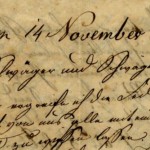It stands at the point where State Road 57 crosses the southern Indiana portion of the Wabash and Erie Canal, that mid-19th-century aqueduct, now defunct, built at monumental cost–not just in dollars, but in workers’ lives.
In the 1830s, Indiana, like many other states, began to plan and build canals to transport goods and people. Like other projects, the Wabash and Erie Canal was begun with great expectations and at great cost. But by the beginning of the 1840s, the state was in dire financial condition and the Wabash and Erie was, for years, uncompleted.
By 1850, work on southern sections of the canal had begun again, and high costs and difficult working conditions plagued the project. Immigrant laborers, mostly Irish, were brought in by contractors to perform the backbreaking work of digging and moving earth. The men were housed in poorly built shanties, some estimated to be eighty feet long with bunks for fifty or more men. To make the work slightly more bearable, “jigger bosses” walked up and down the lines with free whiskey doled out four times a day. During the evening hours, many men continued to drink in “doggerys,” shacks or flatboats which served alcohol, too often diluted with the polluted local water supply.
With filthy living conditions and contaminated drinking water, cholera outbreaks became common. In one outbreak during June and July 1852, more than one hundred workers died along one section of the canal in the Patoka Bottoms. Most of the remaining workers fled the area and bodies lay unburied for days; many men were found dead in their shanties and body and shack were burned together. Local legends tell of bodies being buried in the canal embankments themselves.
In September 1853, the southern section of the Wabash and Erie Canal finally opened for business. By the early 1850s, of course, railroads were already replacing canals as a more efficient form of transportation, and by 1860 many sections of the canal had been abandoned. The Wabash and Erie Canal became emblematic of the failure of Indiana’s great transportation revolution of the 1830s.
Source: Edith Sarra, “Troubled Crossings: Local History and the Built Environment in the Patoka Bottoms,” Indiana Magazine of History vol. 109 (March 2013)
A Moment of Indiana History is a production of WFIU Public Radio in partnership with the Indiana Public Broadcasting Stations. Research support comes from Indiana Magazine of History published by the Indiana University Department of History.























